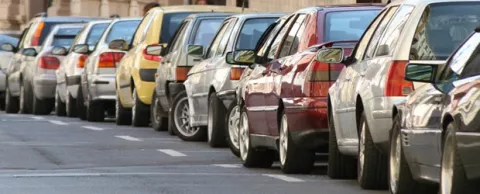
When you ask someone to think about the ways in which harnessing data might enhance their lives, chances are that "in my vehicle" won’t be the answer that first comes to mind. We tend to isolate our visions for a connected future to our offices, homes and public venues, but overlook the roadway as a promising target for optimization.
Intelligent cities may soon be challenging these perceptions. As we find new ways to infuse our city infrastructure with intelligence, a host of opportunities for transportation optimization are emerging. From more efficient parking to traffic reduction to more practical city vehicle usage, we are seeing connectivity increasingly play a role in creating smarter urban transportation. These sort of improvements matter, as traffic congestion alone costs the U.S. economy an estimated $100 billion per year, and air pollution causes approximately 200,000 early deaths annually in the U.S.
With the implementation of communication-capable LED streetlights, cities are finding that installing an intelligent city nervous system is not the remote possibility it once was. After all, most of the infrastructure is already in place, as streetlights are already installed and their LED technology can provide more than energy-efficient, high-quality illumination. They can also be fitted with control systems, communication capabilities and—most importantly for the transportation discussion—sensors and cameras.
Standing at consistent intervals high above city streets by nature of their design, streetlights are an ideal platform for the sensors and cameras necessary to optimize parking, traffic flow and other transportation functions throughout a city. These sensors gather data about their surroundings, relay it back to a cloud-based software system like GE’s Predix Industrial Internet platform, and then that information can be used to drive smarter decisions or enable entirely new capabilities.
Consider a few examples of how innovative technology companies are already helping shape urban transportation optimization by harnessing the power of streetlight-based sensors and flexible Industrial Internet platforms like our Predix cloud solution.
How frustrating is it to circle the same city blocks over and over again looking for a parking space or be surprised by traffic and end up wasting precious time? INRIX has been providing parking and traffic intelligence to leading automakers, transportation agencies and third-party apps. Now they are using ubiquitous streetlights to take their solution one step forward – gaining real-time views of an area at a scalable cost.
“We expect to not only decrease driver frustration, but mitigate traffic congestion and diminish the environmental impact of idling cars at the same time,” says Troy Miller, Vice President of Sales – Internet & Mobile at INRIX.
CivicSmart is also playing a role in making smarter urban transportation management a reality by applying their expertise in vehicle detection sensor design, smart parking meters and data management systems to enhance intelligent city platforms. This solution enables cities to efficiently manage parking infrastructure to unlock the value of their streets and drive growth in core business districts.
Even urban planning around streets and thoroughfares is possible through digital infrastructure. By pairing traffic insights with environmental pulses from companies like BreezoMeter, cities gain intelligence around how traffic conditions impact the environment, giving planners actionable analytics to influence city mapping and climate-change initiatives.
Solutions for urban transportation challenges are being implemented with existing technology, and the examples shared here don’t even touch on some of the possibilities for more intelligent routing of emergency vehicles, driver warnings about roadway hazards, and other traffic flow optimization opportunities. The possibilities are endless, but more importantly, the solutions are real today.
If you are considering how transportation could be managed more smoothly in your city, consider how a sensor-enabled, intelligent, digital infrastructure could help you achieve goals. For more ideas, visit www.currentbyge.com.
James Benson is General Manager for Global Marketing at Current, powered by GE, Intelligent Cities



